Most articles discussing Tramp Art often begin with a similar narrative: “Have you seen this art? It’s grotesque! It’s hideous! It’s so ugly, it’s beautiful! Can you believe this awkward and/or magnificent piece was carved by some hobo in exchange for a can of beans?”
You can almost hear the banjo twang under the headline. It’s the kind of story America loves to tell about itself – a tale of grit and ingenuity, wrapped in a little hardship and a lot of myth. A nameless drifter! A pocket knife! A railroad! A miracle of folk creativity born from nothing but hunger and cedar! It’s a compelling story. It’s also a lie.
The real story of Tramp Art doesn’t start with a hobo and a can of beans – it starts with the IRS. (Because of course it does. This is America, after all.) And like most stories that involve the IRS, it only gets weirder from here. Ready to dispel the myth?
What Even Is Tramp Art?
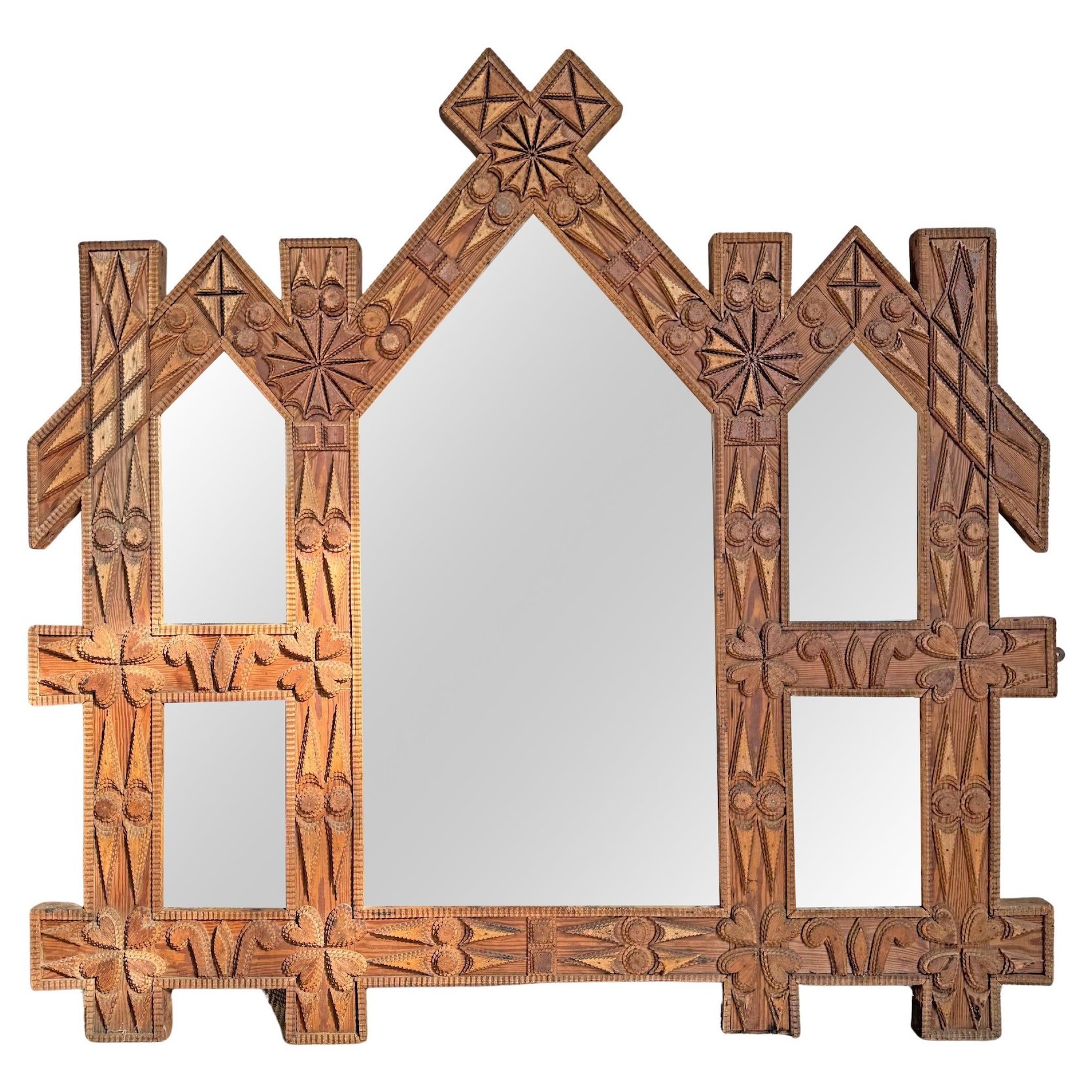
19th-century Tramp Art Mirror, $6,726.70
Tramp Art looks like what happens when someone gives a perfectionist a pocketknife and a little too much time. The pieces are covered in repeating notches, layers, and angles – they’re a little gothic, a little homemade, and completely hypnotic. (How anyone could describe the above as “unsightly” is beyond me – we have slandered our homegrown crafts for far too long!)
Tramp Art was born from the great American tradition of making do – nothing went to waste if it could be turned into something else. People built with whatever they had on hand – bottle caps, cigar boxes, spools, crates, even the occasional scrap of tin or bone. (Folk art from this era presents like a census of what was lying around the house. I’m focusing on the wooden pieces today, but would happily write a similar novel on the bottle cap bowl.) Tramp Artists created everything from tiny ring boxes and picture frames to full-sized grandfather clocks and vanities. The work is maximalist. It’s fussy. It should not work. It completely works.
Historians have sometimes referred to the whole practice as “men’s quilting.” The materials were different – cedar and glue instead of cotton and thread – but the impulse was the same: take scraps, sit down, and make something beautiful and useful for the home.
The Big Myth: “Tramps Made This”
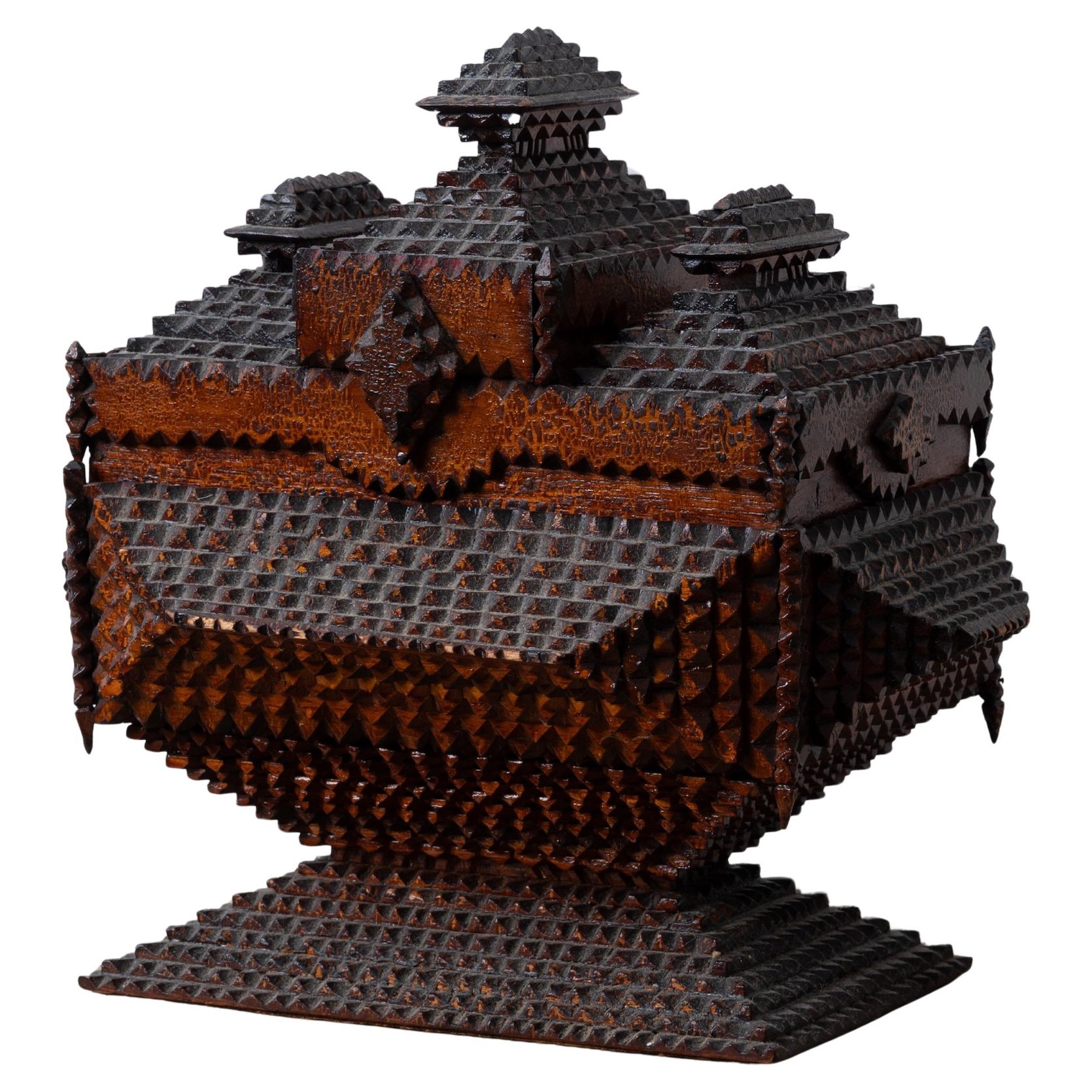
Despite the name, Tramp Art wasn’t made by tramps. Or transients. Or hobos. Or anyone of that ilk, hopping trains with a knife in their boot and a dream in their heart. The term actually didn’t even exist until 1959, when a Pennsylvania folklorist needed a catchy title for a magazine piece and landed on “Tramp Work.” (You can read a scan of that magazine right here – the dressing cabinet on page 6 is to die for.)
But the name stuck, and for decades, people (including yours truly) pictured men carving frames beside campfires, swapping chip carvings for bread. It’s a good story! …just not the right one. The real makers were settled folks: farmers, factory workers, miners, carpenters, shopkeepers. They were normal people who sat down at night and made things because it felt good to make things. Some carved a single frame in their lifetime; others built entire bedroom sets from cigar boxes.
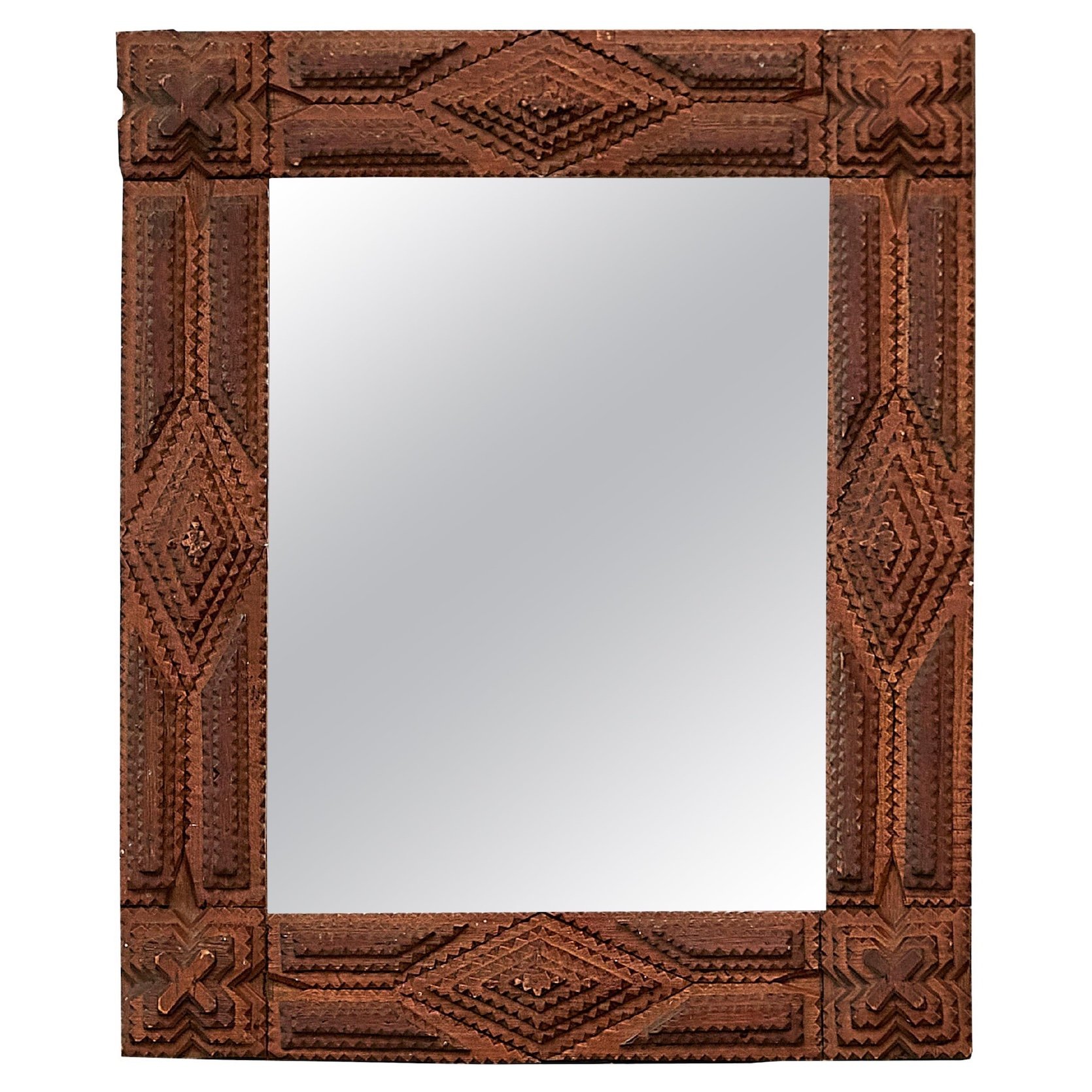
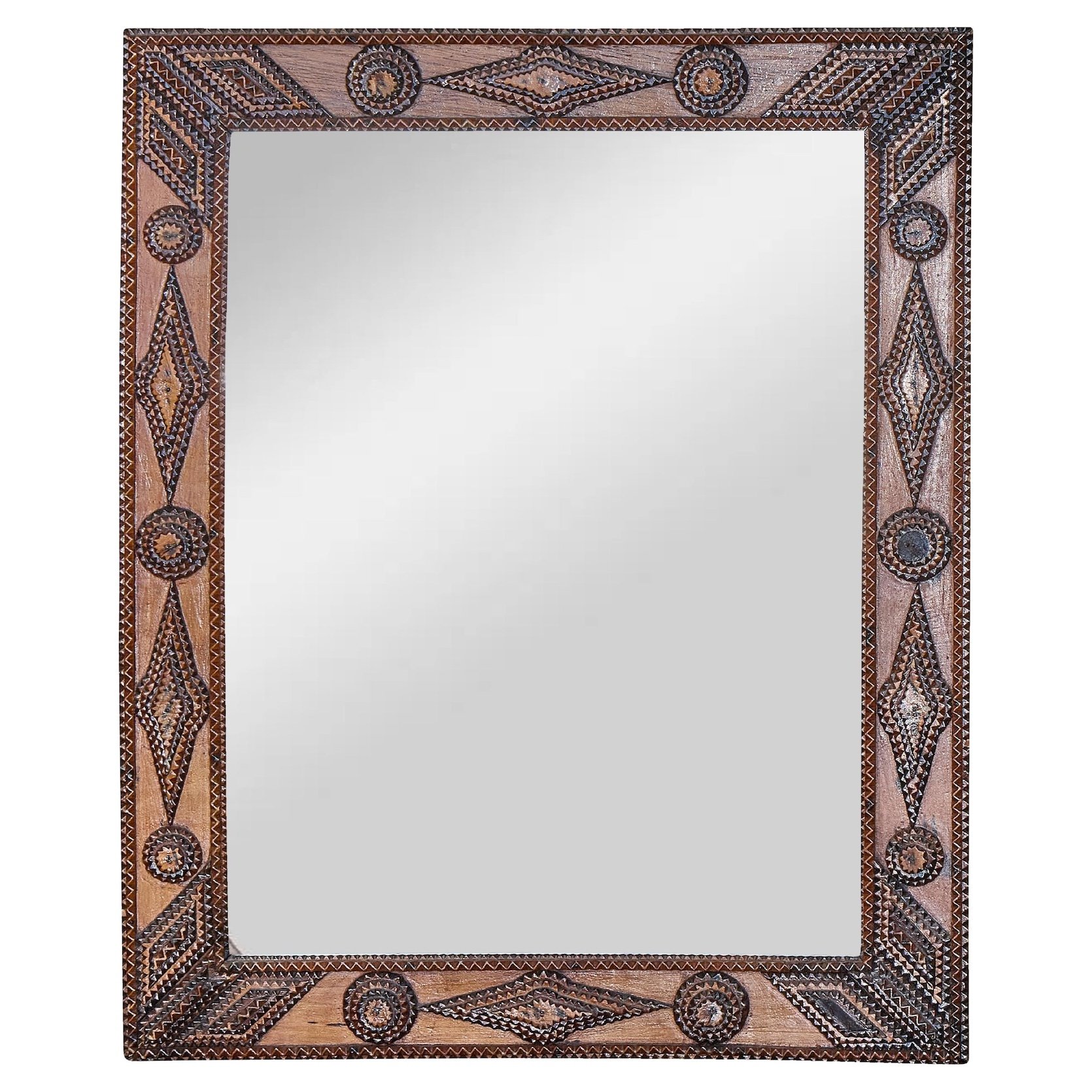
1900s Tramp Art Mirror, $1,250 | Tramp Art Mirror with Geometric Motifs, $2,750
Many were immigrants, especially from Germany and Scandinavia, who’d brought the centuries-old European tradition of chip carving that’d once been used to decorate peasant furniture. They applied those skills to the American waste stream of discarded cigar boxes and packing crates, landing on a new type of folk adaptation: an old-world art meeting new-world excess. (Feels like we could use a bit of this ethos today, don’t you think?)
The “tramp” myth stuck partly because it flatters us – we like our folk heroes poor, wandering, and pure of heart. It also let serious collectors treat the Tramp work like charming outsider junk instead of acknowledging that working-class men – many of them immigrants, some even prisoners – were making serious, time-intensive, technically sophisticated decorative art inside the home. So the story of Tramp Art isn’t one of a wandering, romantic poverty – it’s about staying put, working with what you have, and making it beautiful anyway.
Wait, Why Cigars?
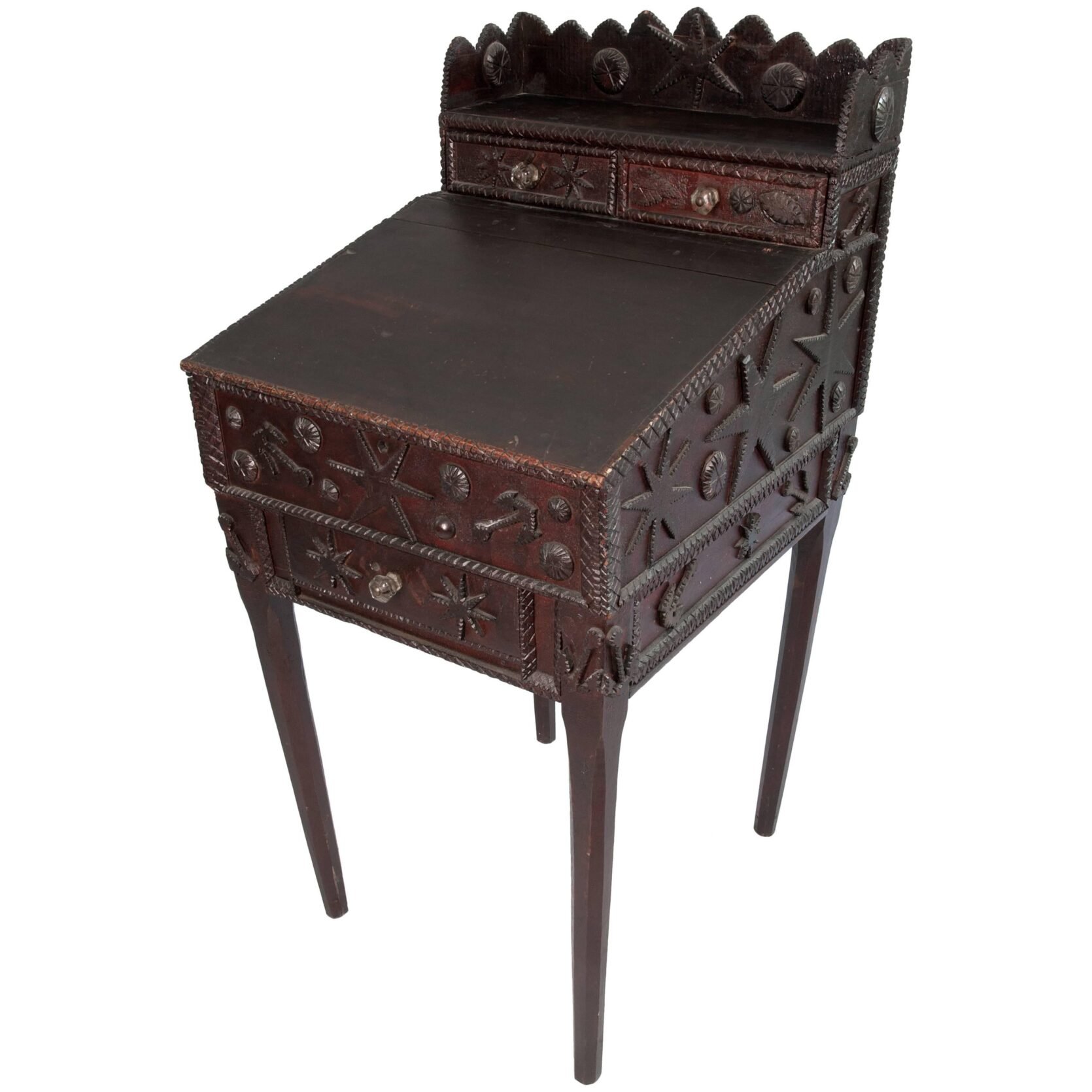
Nautical Tramp Art Desk, $6,000
This all comes back to the IRS.
In 1864, the U.S. government started taxing cigars in an attempt to raise funds for the Civil War. And our bureaucrats did what bureaucrats do best: they invented a bunch of annoying paperwork that unintentionally rendered good wood worthless.
Every cigar had to be sold in a wooden box, sealed with an official revenue stamp. Once opened, the box was done – the stamp couldn’t be reused; the box couldn’t legally be sold again. Every puff of tobacco created a small pile of perfectly usable trash: sheets of Spanish cedar and mahogany, ripe for reuse. Men at home took one look at the pile and thought, I can work with this.
And for the next seventy years – between 1870 and 1940 – they did! Those wood scraps became jewelry boxes, frames, and furniture. When packaging shifted to cardboard and cellophane in the 1940s, the steady stream of scrap dried up, and the art form went quiet.
Seeing the Humanity
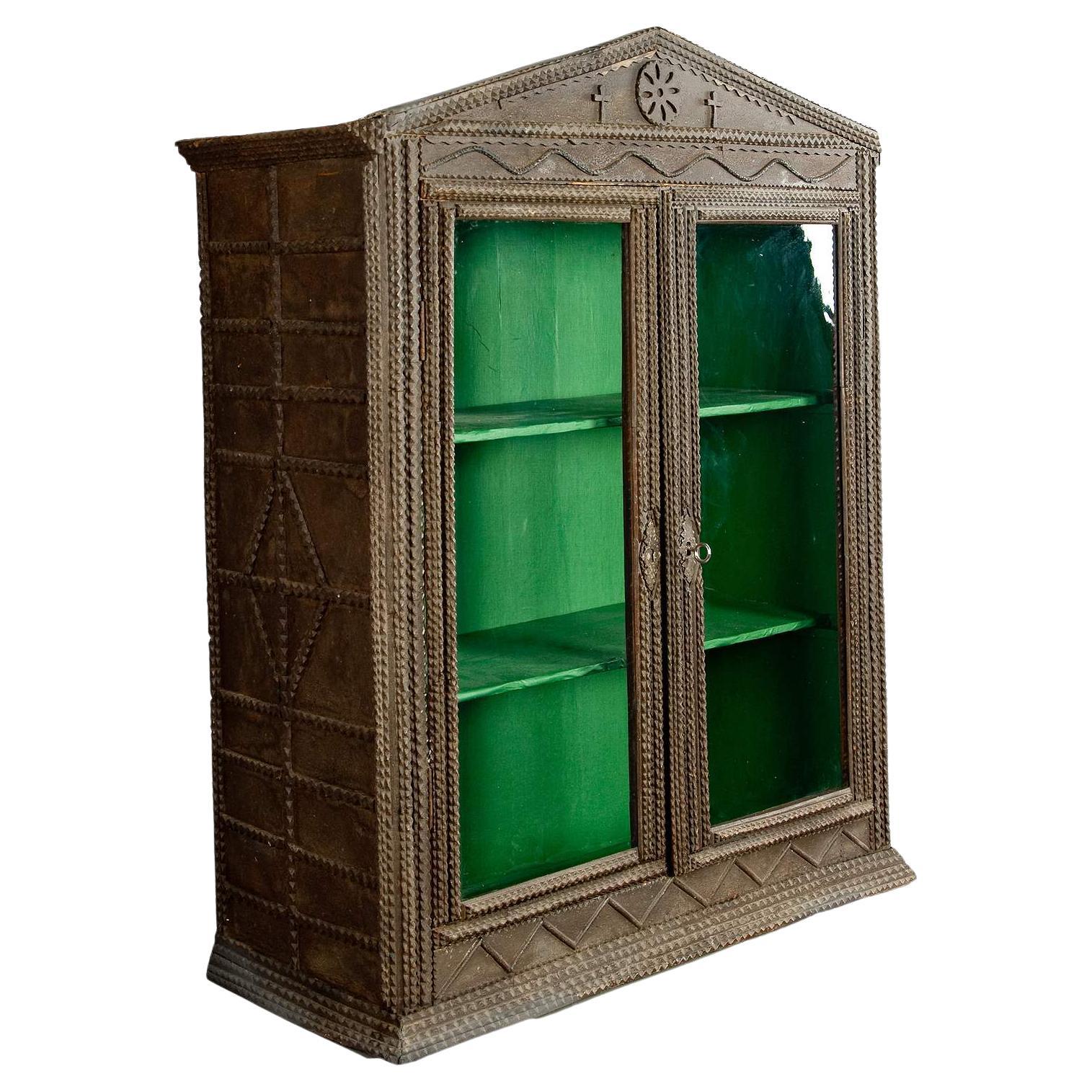
1900 Tramp Art Cabinet, $1,785
A few other things happened between 1870 and 1940 – a series of farm busts, Prohibition, and a little economic collapse called “The Great Depression” that reinforced America’s moral obsession with productivity. Men who were out of work or in seasonal jobs were under enormous pressure to stay busy, and carving became an acceptable kind of stillness.
Sitting at the table after dinner, knife in hand, cutting small V-shaped notches into the sides of old cigar boxes was a way to stay respectable, to keep the hands moving when the world had stopped offering work.
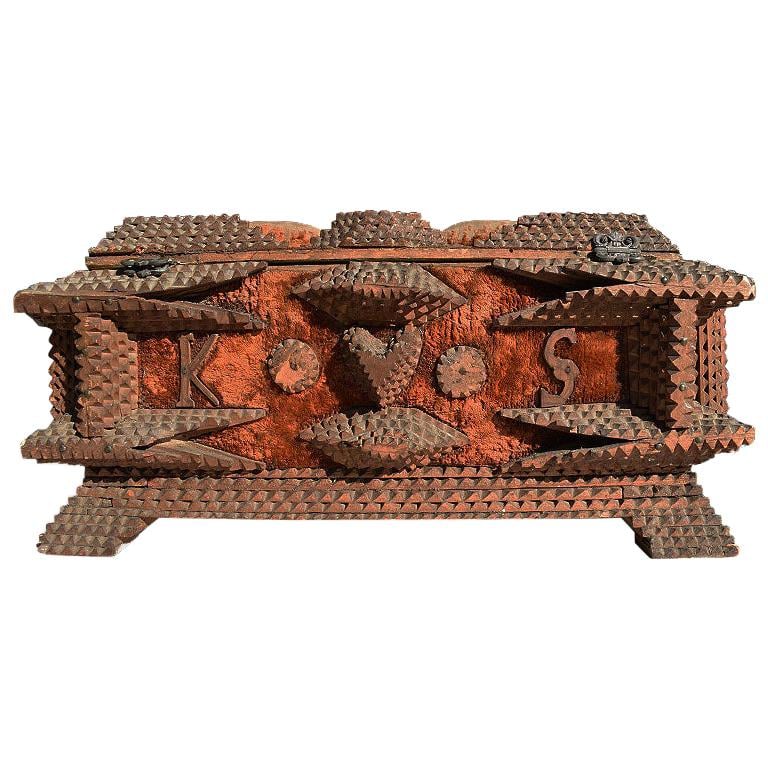
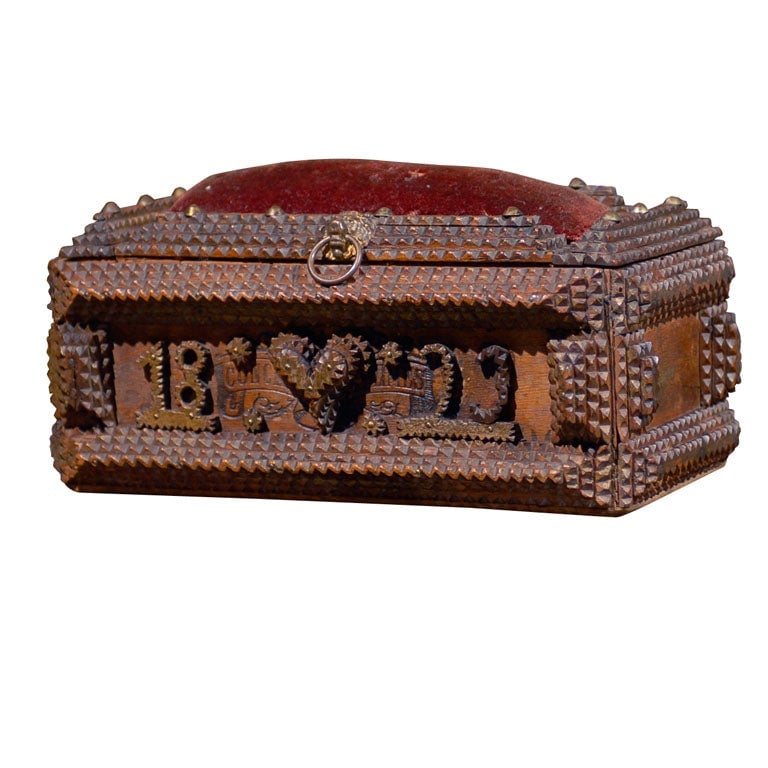
<

